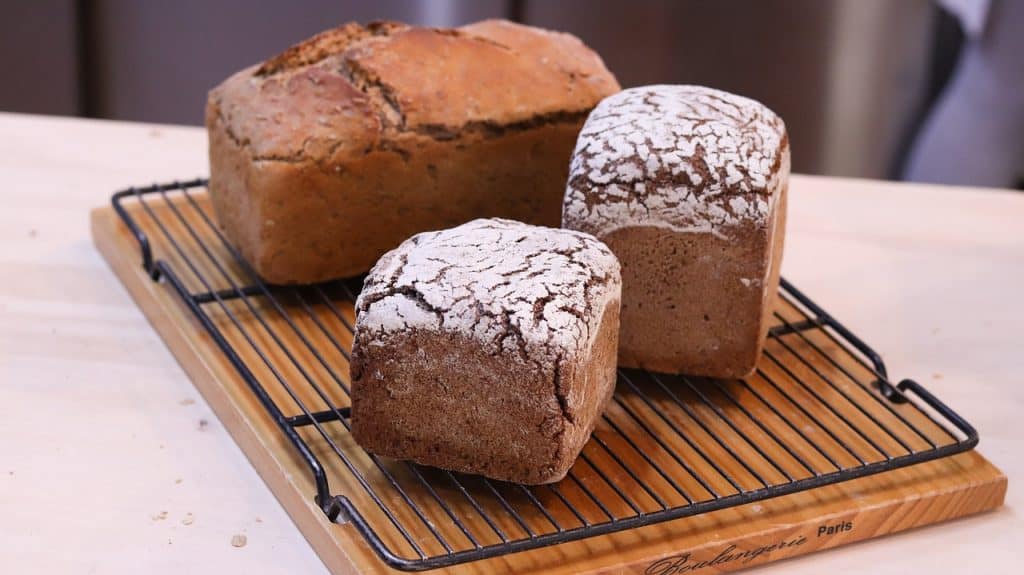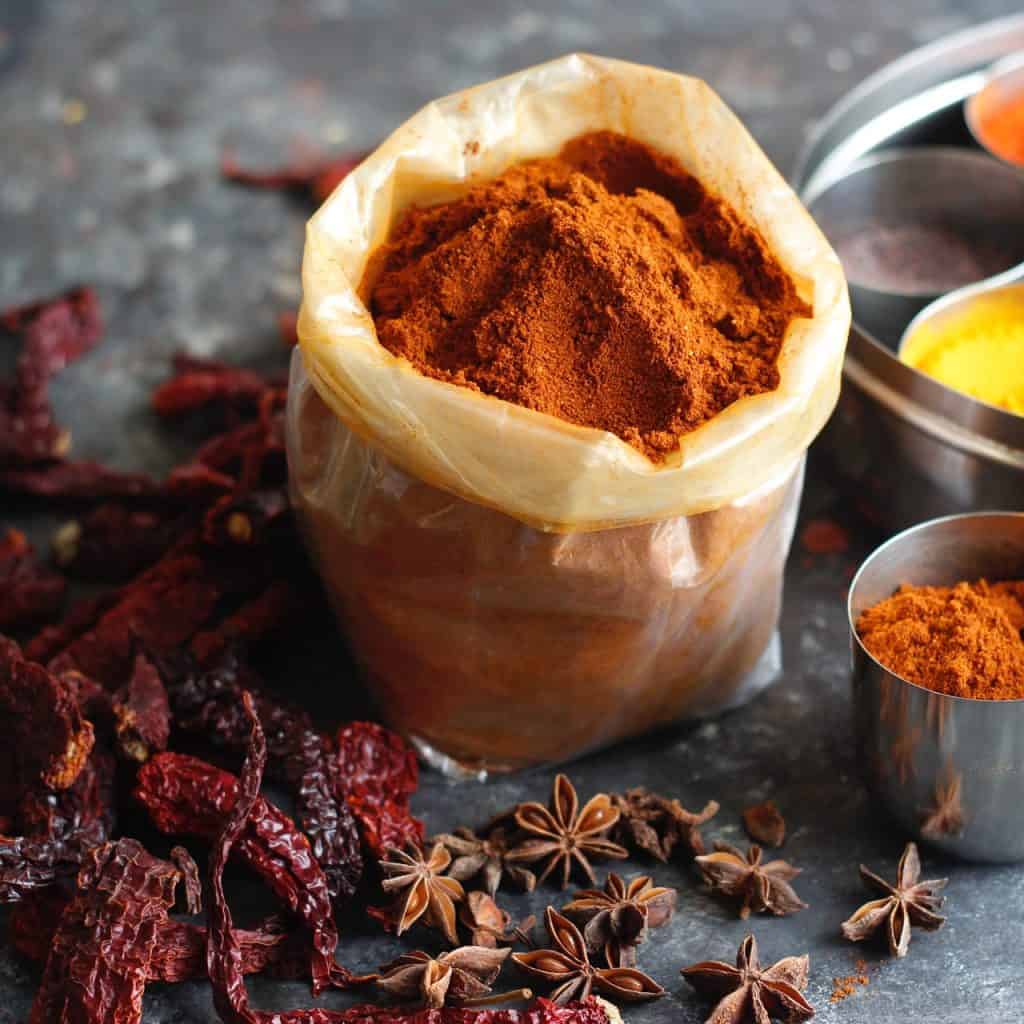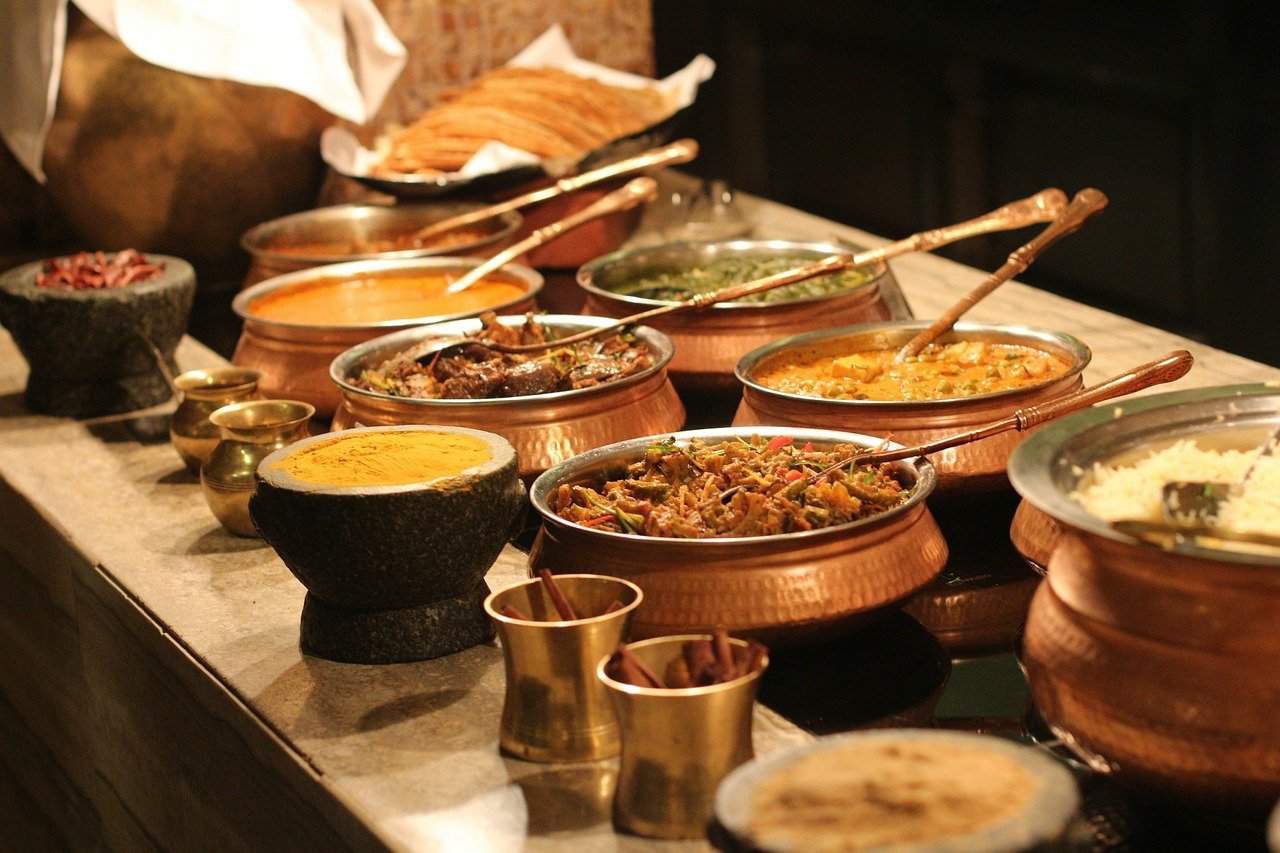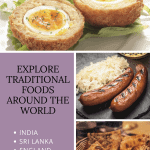Cultural Food Around the World: 6 Traditions You Must Experience
By Adriana David
Steeple correspondent
Food is one of those things we simply cannot live without and much of our day revolves around it. We have comfort foods, tailgating foods, party foods, and special diet foods.
Cultural traditions, especially those related to food, play a pivotal role in shaping our identities. Whether it’s the turkey on Thanksgiving in the U.S. or the mooncakes during the Mid-Autumn Festival in China, these foods connect us to our roots and shared histories.
In this article, I am excited to take you on an adventure exploring cultural food around the world.
What are Cultural Traditions?
When discussing traditions, one would be remiss not to include food. Even for someone like me, who doesn’t hold on to many traditions, I have those foods that I come back to time and time again. One example of a meal I grew up with was a casserole consisting of broccoli,
chicken and rice. It was delicious.
Food, much like clothing or art, are as expressive and individualistic as a fingerprint. Cultural food traditions around the world are both fascinating and enlightening.
Each culture, for instance, has its own ways of expressing their traditions through food. Many people from various cultures choose what foods will be served based on meaning and color of that food.
In addition, food can be presented in many ways. From what’s served on the dinner plate to what utensils are used, including chopsticks, forks, spoons and knives, as well as eating with bare hands, every culture has those staples that are passed down from generation to generation.
How Food is Important to Culture?
As I explained in my last article, the importance of traditions is not always obvious to the naked eye. A tradition can be whatever is important to you and your family. Additionally, tradition can be and usually is a large part of a person’s cultural identity.
Your cultural identity is often made up of your family’s origin, regional history, where you were born, and where you grew up. Therefore, cultural traditions are adaptable, taking on new additions and changes as generations move forward and make their own traditions.
Here’s why food holds such a pivotal role in culture:
- Historical Significance: Many traditional dishes have origins in historical events. For instance, certain foods might have been consumed during festivals, wars, migrations, or other significant events. These dishes become a way to remember and honor the past.
- Cultural Exchange: Food is often at the forefront of cultural exchange. When people from different backgrounds come together, they often share their culinary traditions, leading to a fusion of flavors and techniques.
- Social Connection: Meals are a time for families and communities to come together. They foster bonding, sharing, and are often the setting for important conversations and decisions.
- Ceremonial Role: Many cultures have specific dishes reserved for ceremonies, festivals, or rites of passage. These foods, often prepared with great care, hold spiritual or symbolic meanings.
- Economic Impact: In many regions, the cultivation of certain foods is vital to the economy. This economic importance often elevates the cultural significance of these foods.
- Identity and Pride: Traditional dishes often instill a sense of pride. They become a way for individuals to connect with their roots, especially for diaspora communities.
The Cultural Identity of Food
When it comes to cultural identity, food is an aspect of that identity that is often more impactful than all others.
Consider grilling in the summer – your standard fare of hamburgers and hotdogs here in the United States of America. Some other examples include the turkey we eat with our families on Thanksgiving Day or the ham that many Americans eat on Christmas day.
Of course, the U.S. is not the only country to connect food to tradition. Almost every country and culture in the world hold some important traditions that center around food.

Cultural Food Traditions around the World
For time immemorial, families have gathered around the dinner table and shared unique memories there. Food certainly has the ability to bond families and societies together like nothing else. Every day, new family traditions are being made at the dinner table.
Where ever you are in the world, food has the ability to connect us to our culture and to the people whose cultures are different from our own. For this story, I talked with people from all over the world to get a sense of what their traditions are and how their culture’s food reflects that.
Food Traditions in Sri Lanka
“The most important concept behind the Sri-Lankan dishes is that even if the food is cooked to perfection with the correct flavors, how one decides to eat them plays a huge impact on how one will taste them,” says Dulitha from Sri Lanka. “The most common ingredient found in most dishes is coconut and all dishes are spicy to some extent.”
Food traditions in Sri Lanka begin with rice. They grow more than 15 different varieties. Next to rice, coconuts play an important role in hundreds of dishes from coconut milk to coconut treats.
Another traditional Sri Lanka food is curry sauce. Curry has a long history and has been prepared in several regions for hundreds of years. Sri Lanka curry dishes are prepared with chicken, beef, goat, fish, shrimp, and crab. The rich broth varies in color and flavor depending on a wide variety of spices it is prepared with.
Highlights of the Region
- Rice Varieties: Over 15 different types grown locally.
- Coconut: Used in hundreds of dishes, from coconut milk to treats.
- Curry Sauce: Prepared with chicken, beef, goat, fish, shrimp, and crab.
Food Traditions in England
One of my college friends, Morwenna, shared some of England’s traditional foods.
“In Yorkshire in the United Kingdom, traditional food includes roast beef, Yorkshire pudding, toad in the hole, pigs in blankets, gravy and chips (fries), cheesy chips and rhubarb crumble,” says Morwenna, who is from Leeds.
Family Search has several delicious traditional English food recipes that you and your family will love, including shepherds pie, black pudding, and scotch eggs.
Highlights of the Region
- Roast Beef: A Sunday staple.
- Yorkshire Pudding: Often paired with roast beef.
- Toad in the Hole: Sausages in Yorkshire pudding batter.
- Pigs in Blankets: Sausages wrapped in bacon.
- Rhubarb Crumble: A sweet dessert.

Food Traditions in Germany
Aline is another college friend of mine and was happy to share with me some of the food traditions in Germany.
“In Germany, we eat bread in all its shapes and tastes, especially for breakfast and dinner,” she says. I personally eat it all the time. We also eat Brötchen, which are bread rolls, sliced meat, and Fleischkäse, which is mixture of corned beef, pork, and bacon. We also eat Quark, which is a dairy product, Apfelschorle, which is apple juice and sparkling water, Marble cake and Black forest cake, just to name just a few.”
Many people think of bratwurst, sauerkraut, and beer when they think of traditional German foods, but German cuisine is so much more!
Slow-cooked meats such as sauerbraten and schweinshaxe along with flammkuchen (a German-style pizza) and hasenpfeffer (rabbit stew) speak of a rich heritage.
Highlights of the Region
- Bread: Consumed in various shapes and tastes.
- Brötchen: Bread rolls.
- Fleischkäse: A mixture of corned beef, pork, and bacon.
- Quark: A dairy product.
- Black Forest Cake: A famous dessert.
Food Traditions in Uganda
For food traditions in Uganda, I asked Dr. Kenny Lule to fill me in. He is an MD in rural Uganda as well as pastor of Esuubi Community Church. You can read his inspirational story “Following God’s call to Uganda ministry”.
“In a cultural setting, a meal is served when all the children and their parents are seated around it. The meals is served on a mat like material, and on top of layers of banana leaves that have been covering the steamed meal are laid on and food will put on these leaves.
“Part of sitting together like this was to emphasize family culture, but also to ensure that kids have good eating manners, which you would call table manners in the West and of course in educated families of Uganda today.
“Such practice you rarely find now in urban educated families. Dining tables are being used and even those who can’t afford one, won’t go for the ancient discipline of eating around a mat.
“One local food, Matooke, is a plantain steamed in banana leaves and mashed. They serve meat with it. Most of the time it is beef. Our tribe is mainly a game tribe; our forefathers hunted a lot. Our meat is mostly boiled and fried into spices. It’s not like the American steak.
“We also have other foods like sweet potatoes, potatoes, cassava, yams and maize. Apart from meat, we also have other sauces like beans, ground nuts paste made from peanuts, fish in different varieties and preparations, and chicken. Most of our dishes are steamed.”
Highlights of the Region
- Matooke: Steamed plantain in banana leaves.
- Beef: Often served with Matooke.
- Sweet Potatoes, Potatoes, Cassava, Yams: Common staples.
- Ground Nuts Paste: Made from peanuts.
- Fish: Prepared in various styles.

FOOD TRADITIONS IN INDIA
For food traditions in India, I contacted Evangeline who shared with me common foods as well as traditions centered around them. Evangeline is a blogger at A Kernel for Christ as well as a mom of two young children. I was fascinated as she explained the cultural food traditions of her native home.
Here’s is Evangeline’s story:
Growing up, if there was one food that was a staple in our home, it was idli. Idli is basically a steamed “cake” made of fermented rice and black gram (also known as the mungo bean),” she says. “When I was younger, I tried to stay away from them as much as possible because I found them bland. In recent years, I’ve developed a great fondness for idli given how versatile it can be – not to mention the huge favors it does for one’s waistline.
Given that it is fermented before being steamed, it is light and doesn’t leave you feeling lethargic. Traditionally, idli is eaten with Sambhar – a stew that is made up of lentils and a variety of vegetables. Although that is a spectacular combination, idli can be adapted in many forms to make it more appealing to picky tastebuds. For instance, my three-year-old loves to eat his idlis with a dab of honey.
South Indian foods are almost always eaten steaming hot. When I first moved to Austria and met my first Italian friend, I was shocked to see her eat bread, butter, and honey for breakfast. In my husband’s home, bread is only eaten by someone who is sick and cannot ingest anything spicy.
Indian food is impossible to recreate without authentic spices. When I first moved to Austria, I was disheartened to find that there was no Indian store in the town that we were living in. In order to help my sad, spiceless cupboards, I started to bring spices from India every time we went there on vacation. I would make a long list of everything we needed and my mother-in-law would dry, grind, and pack the spices at home.
Agriculture is the primary occupation of Tamil Nadu with rice being the most widely cultivated crop. Consequently, the staple food of the state is rice. We enjoy a large variety of foods that are steamed, boiled, baked, and fried that has rice as the base.
Lunch is usually packed at home by the woman of the household for those who go to work and for school-going children. This is usually a form of “variety rice.” Variety rice is basically rice mixed with an ingredient that gives it a unique flavor. For instance, coconut rice (thenga saadham), tamarind rice (puliyogare), mint rice (pudhina saadham), Sambhar rice (Sambhar saadham), and even curd rice!
Whenever we gathered for a meal, especially when guests came over, I remember my mother never sat at the table and ate with us. She stood by the table and made sure that everybody ate to their satisfaction and took it upon herself to serve people as they partook of the meal. She always did it happily and was most content after each person around the table had their fill and was satisfied.
This is the custom that is generally followed in homes around Tamil Nadu. Hospitality is paramount and guests are treated with the utmost respect and are given a place of honor. Although this might seem strange to the outsider looking in, I’ve grown to appreciate the attitude of service that I see the women in my culture develop.
Although it is perfectly acceptable that they eat their meal at the same time as everyone, they put the needs of others before them and tend to everyone before they fulfill their own needs. When it was only the four of us, my mother would first serve us the food that she prepared and then sit down to eat along with us.
I do not ever recall eating at a table while growing up – it was always on the floor, with a sheet spread out under us to protect the carpet. It is only in recent years that families have adopted the culture of sitting around a table. For centuries, the family meal was shared sitting on the floor.
Highlights of the Region
- Idli: Steamed cake made of fermented rice and black gram.
- Sambhar: A lentil and vegetable stew.
- Rice-Based Dishes: Including coconut rice, tamarind rice, and curd rice.
- Spices: Essential for authentic Indian flavors.
- Bread: Different types like chapati, naan, and paratha.
Food Traditions in Brazil
Brazil boasts a rich culinary landscape, influenced by its indigenous roots, Portuguese colonizers, and enslaved people. Staples like rice and beans are common, but regional dishes like feijoada, a black bean stew with pork, and moqueca, a fish stew with coconut milk, showcase Brazil’s diverse flavors.
Street foods, such as coxinhas (chicken croquettes) and pastels (fried pastries), are also popular. Brazil’s cultural food is a testament to its vibrant history and melting pot of influences.
Highlights of the Region
- Feijoada: A black bean stew with pork.
- Moqueca: Fish stew with coconut milk.
- Coxinhas: Chicken croquettes.
- Pastels: Fried pastries.
- Brigadeiros: Chocolate truffles, a popular dessert.
Continuing cultural food traditions with your family
Rosevine Cottage Girls have an amazing chocolate cake recipe that has been in their family for generations. Not only does this cake recipe give them a connection with their ancestors, but it teaches each generation that they are part of something bigger than just themselves. They are drawn into a feeling of belonging.
What cultural food traditions do you embrace and wish to pass down to your children? I’d love to hear about them in the comments below!
You might also enjoy these posts about traditions!
Mourning rituals around the world
Final Thoughts
As we journey through the diverse culinary landscapes of different countries, it becomes evident that food is more than just sustenance. It’s a celebration of culture, history, and shared human experiences.
From the vibrant streets of Brazil to the diverse villages of Uganda, every dish tells a story, weaving tales of traditions passed down through generations. By exploring cultural food around the world, we not only satiate our taste buds but also enrich our understanding of the world’s vibrant tapestry of cultures.
Let’s continue to cherish these culinary traditions, for they are the flavors that connect us all.”
Frequently Asked Questions (FAQs)
Q1: How do Cultural Traditions Influence Popular Foods?
A: Cultural traditions play a significant role in shaping the popular foods of a region. The history, geography, and significant events of a place often dictate its culinary preferences. For instance, coastal regions might have a rich tradition of seafood dishes, while areas with fertile land might be known for their fresh produce.
Additionally, historical events, such as migrations, wars, or trade, can introduce new ingredients and cooking methods, leading to a fusion of flavors and the birth of new dishes.
Q2: How is Food Important to Culture?
A: Food is a reflection of cultural identity, carrying stories of the past, traditions, and the essence of a community. It serves as a means of historical remembrance, cultural exchange, social connection, and has ceremonial roles in many cultures.
Traditional dishes often instill a sense of pride and become a way for individuals to connect with their roots.
Q3: What are the Most Popular Cultural Foods?
A: The answer varies by region. From sushi in Japan to tacos in Mexico, every country has its iconic dishes. These foods not only tantalize our taste buds but also offer a glimpse into the region’s history and traditions.
Q4: How Does Culture Affect Food Choices?
A: Culture influences food choices through traditional recipes, cooking methods, and even the times at which meals are eaten. Religious beliefs, societal norms, and historical events can also dictate dietary preferences and restrictions.
For example, certain cultures might abstain from consuming specific animals due to religious reasons, while others might have a rich tradition of vegetarianism.
Q5: Why are Some Foods Reserved for Special Occasions?
A: Many cultures reserve specific dishes for ceremonies, festivals, or rites of passage because these foods hold spiritual or symbolic meanings. They might be associated with historical events, religious stories, or cultural beliefs.
Preparing and consuming these dishes during special occasions helps in reinforcing cultural values and strengthening communal bonds.

Teresa Trumbly Lamsam, Ph.D., is an accomplished Social Scientist and Journalist. Passionate about establishing credibility in the digital realm, she champions transparent and trustworthy online content. She is dedicated to producing content that sparks curiosity and nourishes the heart and mind.










Another great article, Adriana! I was similar to you with not too much personal food culture growing up. It was once I married my husband who is part Italian that I learned so much about cultural food traditions. I love the countries you picked out as well. Thanks for a great read!
Hi Jessie! Thank you so much for reading my article. Thank you for sharing your experience!
Very interesting to read about all the different cultural food traditions. It is fun to learn about other countries and the food that is special to them.
Hi Collene! Thank you so much for reading. I appreciate it!
This is a neat post. I love learning about different cultures and traditions. I am from the US but I have been living in El Salvador for many years now. One of my favorite things about this country is its food and how it came to be important to them! Many of the traditional dishes go all the way back to their native people so long ago!
Hi Meghan! Thank you so much for reading and for sharing your experience! I appreciate it.
I love this, as a Canadian living in Zimbabwe, I now have a much greater appreciation for the culture around food. In Zim, the staple food is sadza, and I have learned to make some of the cultural dishes. But since my husband taught me, the women here always tease me a little because I serve food the way a bachelor would. There’s so much to learn about the techniques and some things don’t translate easily when the traditional food is cooked over an open fire. Thank you for this beautiful insight into dishes from around the world.
Hi Lily! Thank you so much for reading. I love hearing about your experiences with food in Zimbabwe!
You are so right, we love food and look forward to the cultures surrounding a meal or recipe. I fondly think of my mum’s cooking and how much l miss it having moved to another country, but your post reminded me too of travel and how we link popular destinations with new foods!
Hi Ava! Thank you so much for reading and for sharing your experience! Food is extremely central to life!
Very interesting to read about cultural food traditions. I don’t really think about it until I travel and cannot buy and eat foods I’m used to. Thanksgiving is a time for traditional foods for my family. Just yesterday my family was telling me what foods were their favorites for our Thanksgiving meal. Looking forward to it already!
Hi Teresa! Thank you so much for reading this. I can’t wait for Thanksgiving, either!
I am Nigeria, this is new to me. With my new age celebration, I decided to try out new things. Perhaps, I could include food, who knows?
Thanks for putting this out
Hi Victory! Thank you so much for reading this! I appreciate it.
Growing up in an Italian family, food was (and still is!) a huge part of our culture. I love learning about other cultures and the foods they eat. This post was not only informative and interesting…it made me hungry! 😉
Hi Carla! Thank you so much for reading this, I appreciate it. Writing this also made me hungry!? There are so many new foods I need to try now.
Food is such a central part of our culture. The type of food, the spices that make it smell or taste a certain way, and the times of the year when we eat different things. It’s very interesting to compare these traditions and cultures!
Hi Karen! Thank you so much for reading this. I appreciate it!
Well, this article is right up my alley! I love food and learning about food traditions. In New Orleans we talk about, make and eat many different types of foods. It is part of our culture. Loved reading about these other cultures!
Hi Mary! Thank you so much for reading this! I love hearing about your experience in New Orleans. Thank you for sharing!
There’s indeed a diverse variety of cultural food traditions all around the world.
This was such an interesting article. 🙂 I am so glad I was able to contribute to it.
I loved this article, Adriana. So great to go behind superficial knowledge of other people’s culture and food traditions to learn more. And I did learn more! The “table” is so important – (even if it is sitting on the floor) – the being together sharing food and love.
This was fascinating to read. I love learning about different t cultures and their traditions. Thanks so much!!
I enjoyed reading about different cultural traditions with cooking. You have awakened a desire to try other cuisines!
Such an informative article about food and its culture. It made me hungry! I would love to try all of them when it is already safe to travel! Thank you so much for sharing!
I love that you pointed out that, “Where ever you are in the world, food has the ability to connect us to our culture and to the people whose cultures are different from our own.” So very true!